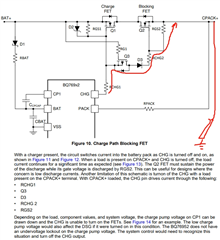Hello:
We now have a project that wants to use your bq76952. When it works, it does not cooperate with the single chip microcomputer, that is, it is protected independently. First of all, please help confirm that bq76952 can work independently without external processor?
In this project, we will use the charge discharge port, that is, the parallel paths mentioned in your document: slua952. Then we need to use the blocking function at the charging port, that is Blocking Leakage Currents in Parallel Paths. We can just use the scheme in this paper, but as explained above, there is no processor in our system. The question is: if bq76952 does not work with MCU, that is, when it works independently, can this "blocking" function be used? If you can, please help explain its working principle?


